Recently, many products are sewn from a special material - footer with lycra. Things made from it do not shrink, stretch well and are very comfortable to wear. Below in the article, what kind of fabric is footer two-thread with lycra, how it is produced, where it is used and how to care for products made from this material.
Lycra footer - what kind of fabric is it?
The fabric is a type of knitted material, the front surface of which is smooth to the touch, and the back is looped. Most of the fabric is produced using cotton. To give the fabric additional elasticity, a small amount of lycra is added to the raw material. Often its percentage is no more than 7.

For your information! Lycra is a polyurethane synthetic fiber. This material is also called elastane or spandex. The material consists of flexible fibers that connect with each other and make the fabric elastic. Thanks to this, the fabric can stretch and quickly return to its previous appearance and shape without tearing.

From the inside, footer with lycra is a textured material. This is due to the additional thread laid along the inside. From the front side, it is considered a ground thread, from the back side - a lining. There is one (or two) threads. The lining is woven into the knitted material. As a result, freely sagging sections are formed. After combing the fabric, pile appears.
Types of fabric and areas of its application
When studying the question of what kind of fabric footer with lycra (fully lycra) is, one should consider its types.
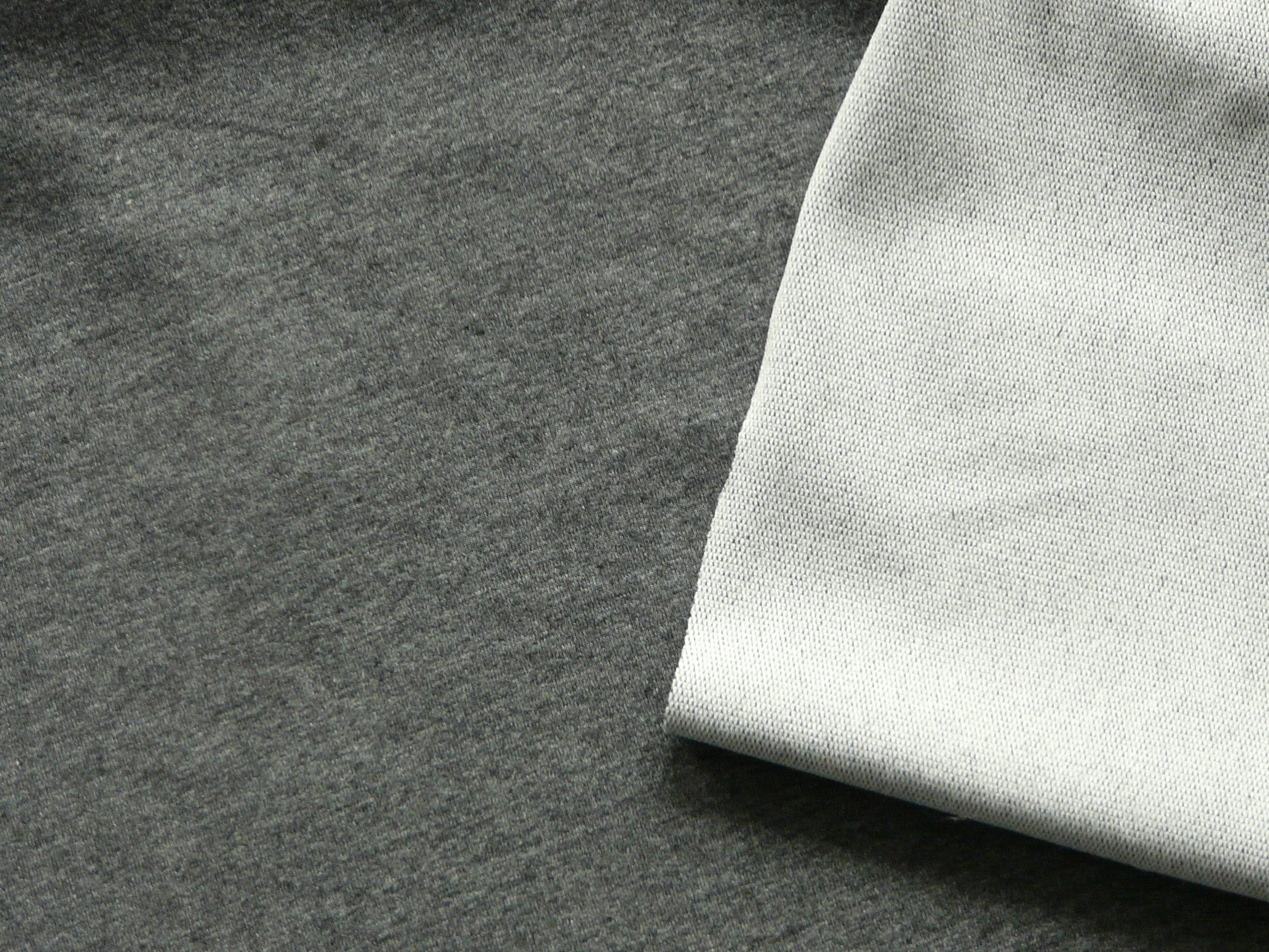
There are only two of them:
- two-thread footer fabric with lycra - the material is denser than single-thread. On the front side it is smooth, and on the back side it has a light pile (loops);
- Three-thread footer fabric with lycra - the densest and much thicker type of material, with a thick fleece.
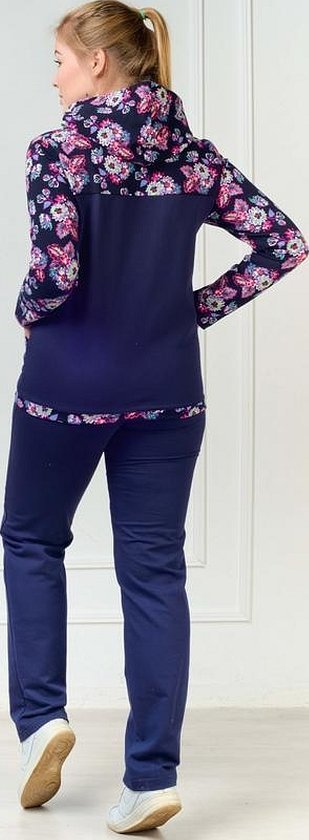
The material is used in the following types of products:
- Household items. Cozy, warm clothes for rest, sleep, house robes, various sets of clothes are sewn from footer with lycra. It is easy to do various housework in it, since the material does not restrict movement.
- Children's products. The material in question is used to sew blouses, suits, trousers, warm hats, and rompers. The softness of the surface on the inside ensures very gentle contact with the sensitive skin of babies without causing irritation. Due to its excellent hygienic properties, the material is suitable for making things for newborns. In addition, the fabric is very practical. This is very important for this category of products, since children's things require frequent washing.
- Sportswear. Due to its elasticity, this material is very convenient for sports activities and training. Sports leggings and suits are sewn from it. The fabric does not restrict movement, does not allow the body to overheat, dries in a short period of time, absorbs moisture.
- Items for everyday wear, outerwear. Items for men and women for everyday use in casual style necessarily have in their collection items made of full-lycra. This group includes sweatshirts, jackets, skirts, zip-up sweatshirts, dresses with a hood, coats. They look very stylish and are very comfortable to wear.
- Special type products. This refers to insulated vests, sweatshirts, trousers, and fleece-lined underwear.
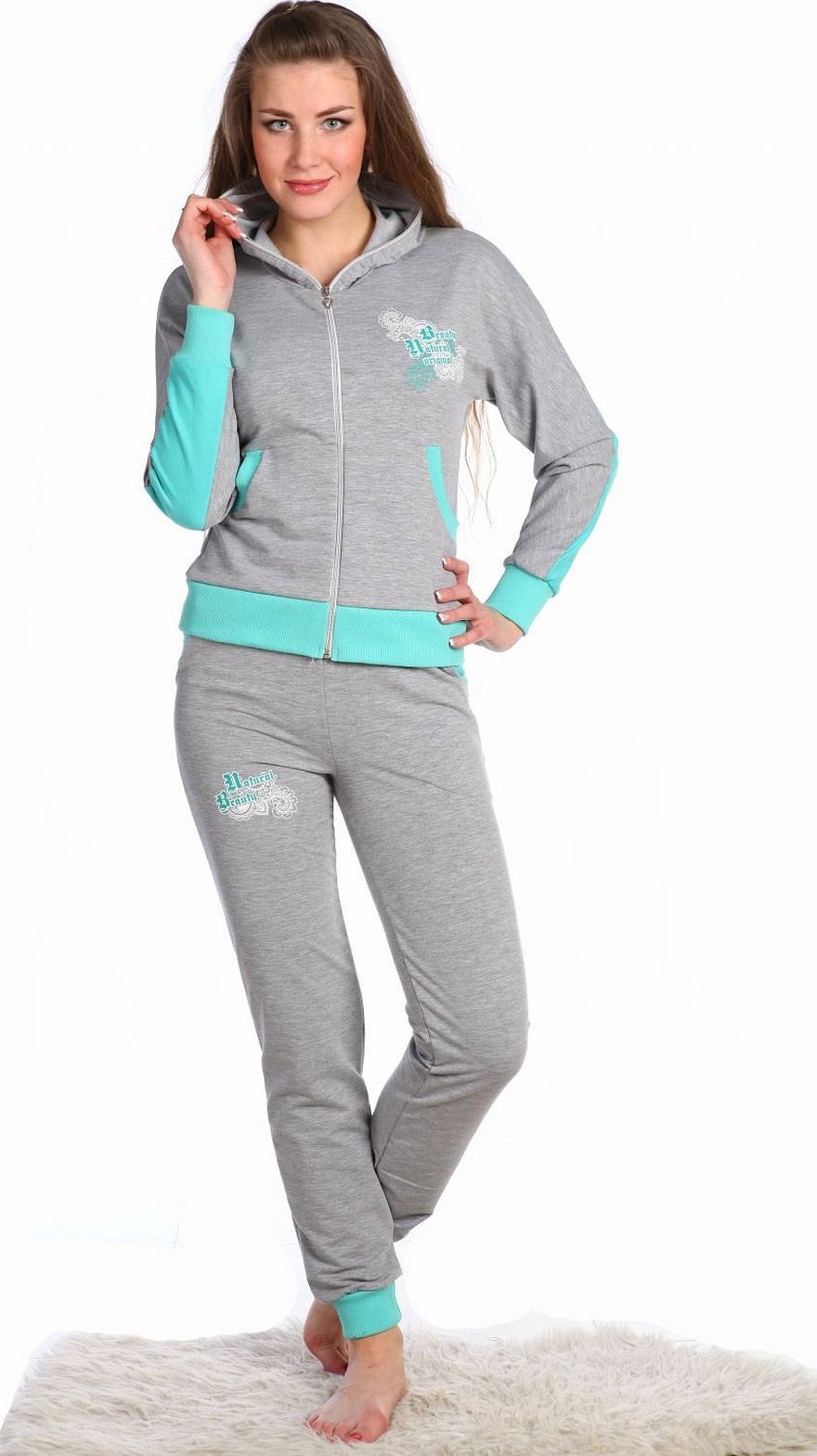
Care and washing recommendations
Items made from this material should be hand washed. Machine washing on cotton cycle is allowed. The temperature should not exceed 50 °C.
Please note! Washing white items is allowed using universal powder. Colored items are best washed using special gels.
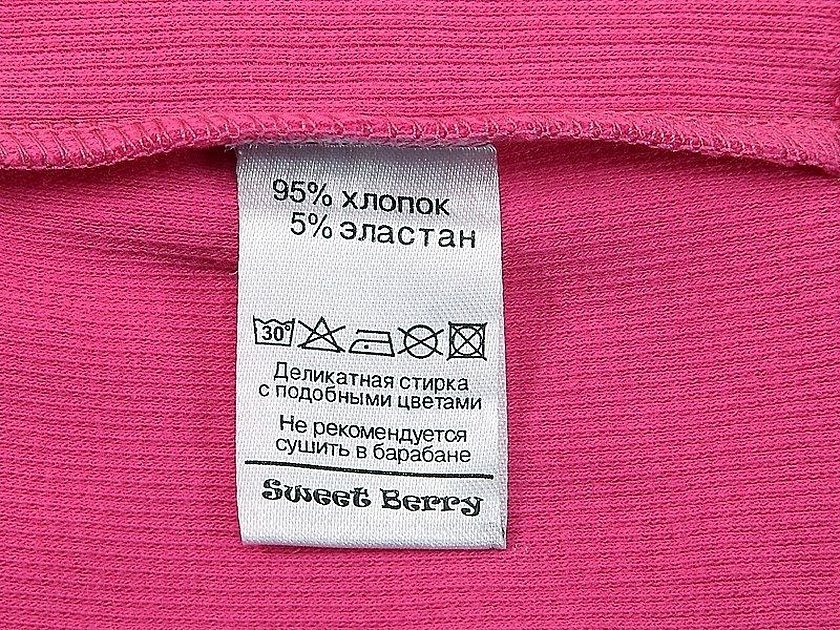
If the footer has a thick fleece layer, it should be washed using liquid detergents. This is because simple powders are not able to dissolve completely, so particles of chemicals can remain on the fabric fibers. In addition, when washing, it is best to additionally turn on the rinse function.
Footer products cannot be boiled due to the presence of lycra fibers. After the item has been washed, the product must be hung in a well-ventilated room. Ironing should also be done on the cotton setting.
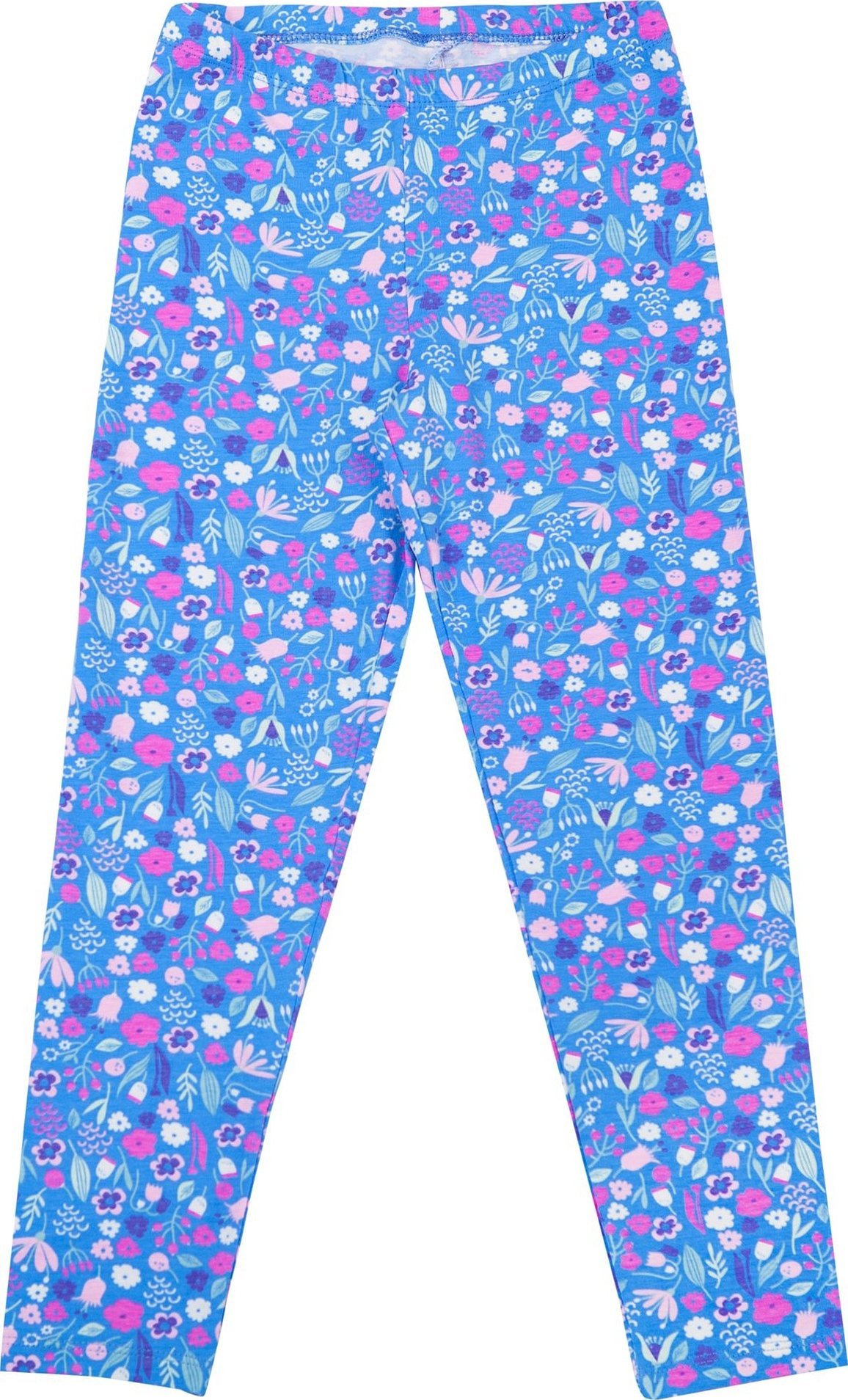
Pros and cons of fabric
The basic positive properties of knitted fabric with lycra include the following characteristics:
- Hygroscopicity. The 2-thread footer fabric with lycra retains its properties for a long time due to the addition of a small amount of elastane. Hygienic characteristics also depend on it: the ability to quickly absorb moisture, remove it to the outside, allowing the body to remain dry.
- Softness. Loops and pile allow the material to provide soft contact with human skin.
- Airtightness. The skin in products made from this material can breathe.
- Low thermal conductivity. Thanks to the fleece located on the back side of the fabric, the clothes can retain heat for a long time without letting in the wind.
- Elasticity. Adding a small percentage of lycra fibers to the type of fabric in question gives the material unique properties. It stretches, quickly regains its original shape, and does not stretch. This allows the clothes to practically not wrinkle and retain their original dimensions after washing.
- Wear resistance, strength. The combination of elasticity and the looped surface of the back allows the material to be very durable and not to tear. The material does not form pellets or abrasions over time. Multiple washings do not harm the items.
- Color fastness. The material does not fade after washing and does not burn out in the sun.

Please note! If you notice that a product made of footer with lycra is shedding, it means that the material from which the item is made is of low quality. Most often, artificial fleece is used on the inside.
The material has few negative qualities. Often they appear because buyers do not follow the recommendations for choosing fabric. Despite the fact that this type of material is affordable, you should not choose the cheapest things. These products may be of low quality.
When buying items made of footer with lycra (for example, sweatshirts or hoodies), you need to pay attention to their density. High density indicates that the knitwear is of high quality. The highest quality ones have a density of 310 g/m² and higher.
Recommendations for choosing products made of footer with lycra:
- You need to carefully study the label describing the composition. A number of manufacturers often add 30% polyester to it in addition to cotton with an admixture of lycra.
- You should pay attention to the quality of the threads. They come in three types: long (from 35 to 70 mm), medium (from 28 to 36 mm) and short (from 19 to 28 mm).
Long threads are considered to be the highest quality. They prevent lint from appearing on the front side. This type of knitwear is called penyi. It feels smooth, does not wrinkle, and is practically stain-free.
For your information! The middle threads of the knitted type are called carded or ring.

Short types of threads are the least quality. They have fluff or fuzz on their ends, sticking out. This type of material is marked o/e, or Open End. It is less practical, so it is considered the cheapest.
Reviews
There are many reviews about the material on the Internet, both positive and negative.
Pavel, 36 years old: "I liked the excellent quality of the material, as well as its softness and pleasant feeling when in contact with the body. The child wears a lot of clothes made of this fabric and is very happy. The products are washed at 30 °C, due to which the material does not deteriorate or shrink. In general, these things are very comfortable and warm."
Ekaterina, 24: "The sweatshirt shrank after washing, shrinking by half. The problem arose because of washing the items at a high temperature. I won't buy such items anymore, as they are too much of a hassle."
Valentina, 44: "Excellent material for a tracksuit. I bought it and didn't regret it: it doesn't stretch, doesn't fade, fits well. I've washed it a hundred times already, and the color is like new. I also advised my friends to buy the same."
For your information! Footer with the addition of lycra is considered one of the most popular materials that meets the requirements of an active life in the modern world. It has a beautiful appearance, excellent hygienic properties (practicality, durability) and an affordable price.




